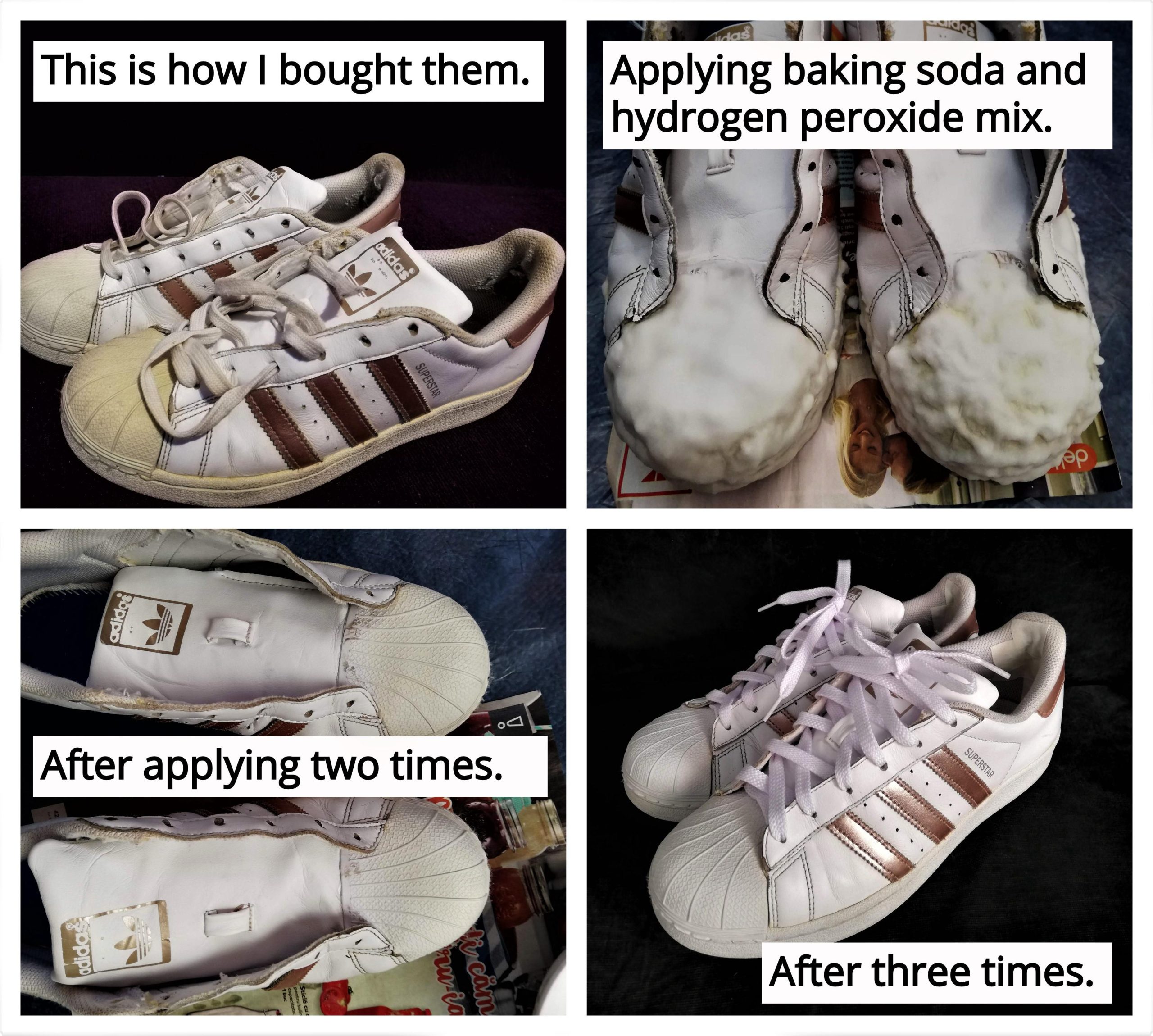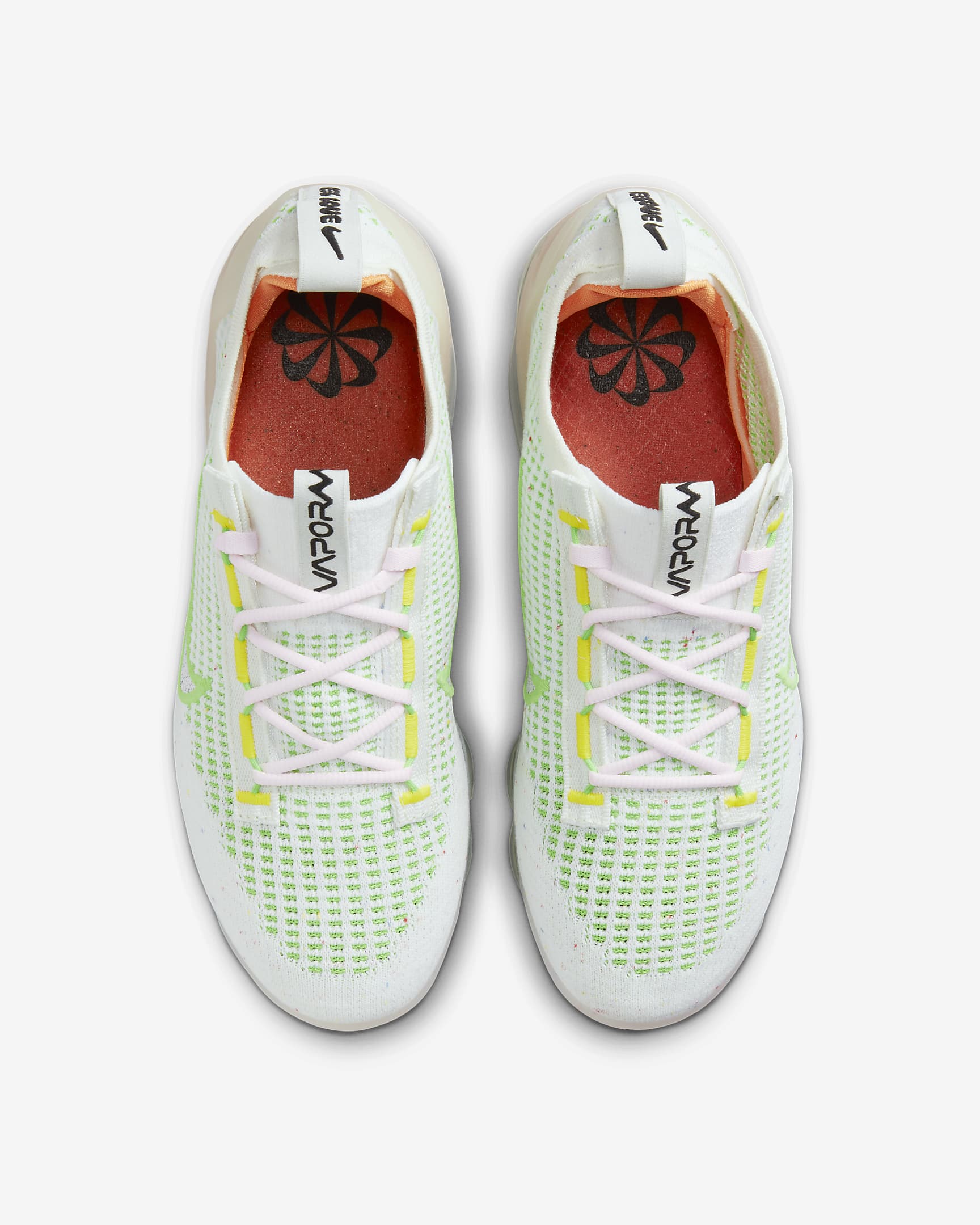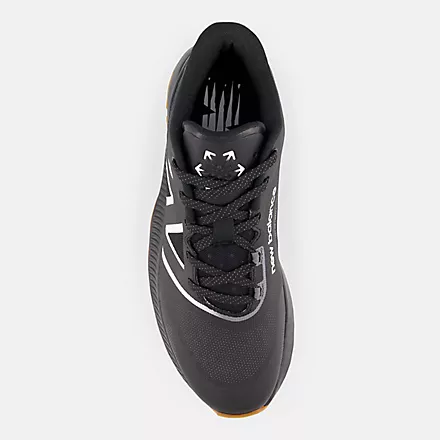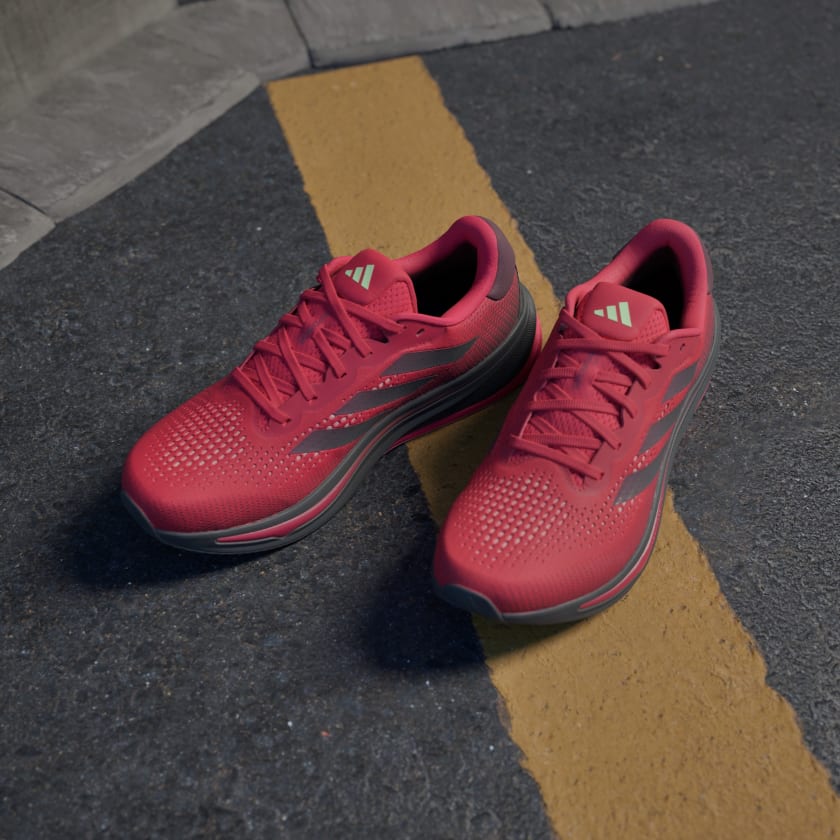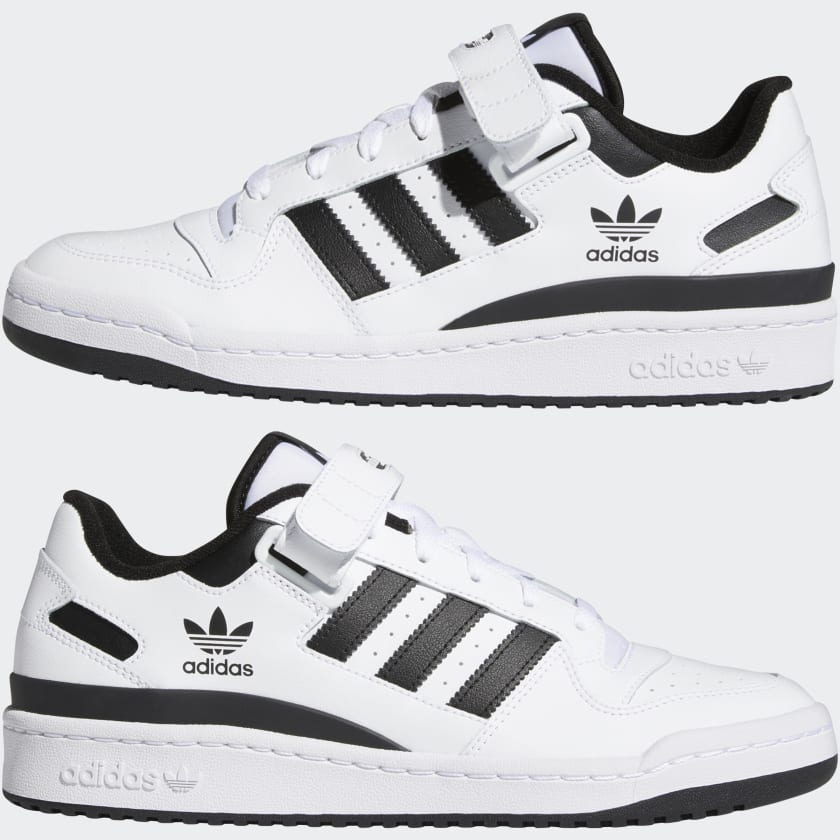Cleaning your shoes with hydrogen peroxide is generally safe for rubber and plastic shoes. Many people use Accelerated Hydrogen Peroxide to disinfect rubber boots effectively.
You can confidently clean your shoes using hydrogen peroxide for a thorough and safe cleaning experience. It is an excellent option for removing stains and disinfecting your footwear, ensuring they look and feel fresh. Moreover, hydrogen peroxide is an eco-friendly and budget-friendly cleaning solution for maintaining your shoes in top condition.
By following simple steps and using hydrogen peroxide with care, you can keep your shoes clean, hygienic, and looking brand new for longer.
The Basics Of Hydrogen Peroxide For Shoe Cleaning
Hydrogen peroxide can be safe for cleaning shoes, particularly for rubber and plastic footwear. It is commonly used to disinfect the bottoms of rubber boots and can help remove stains and discoloration. However, it’s important to test a small, inconspicuous area first to ensure that the material is not adversely affected.
What Is Hydrogen Peroxide?
Hydrogen peroxide is a chemical compound that is often used as a disinfectant and bleaching agent. It is a colorless liquid that is slightly more viscous than water and is commonly sold in drugstores as a solution with a concentration of 3% to 10%. Hydrogen peroxide breaks down quickly when exposed to light, heat, or air, which is why it is usually sold in opaque containers.
Common Uses In Household Cleaning
Hydrogen peroxide has many uses in household cleaning, including as a stain remover, disinfectant, and deodorizer. It can be used to remove stains from fabric, carpets, and upholstery, as well as to clean and disinfect surfaces such as countertops, sinks, and toilets.
Hydrogen peroxide can also be used to remove odors from shoes and clothing, as well as to disinfect and clean cutting boards and kitchen utensils. When it comes to cleaning shoes, hydrogen peroxide can be an effective solution for removing stains and disinfecting the surface of the shoes.
However, it is important to note that hydrogen peroxide can cause discoloration or fading on certain materials, such as leather or suede. It is recommended to test a small, inconspicuous area of the shoe before applying hydrogen peroxide to the entire surface.
Overall, hydrogen peroxide can be a safe and effective solution for cleaning shoes, as long as it is used properly and with caution. Always follow the instructions on the label and avoid using hydrogen peroxide on delicate or sensitive materials.

Credit: m.youtube.com
Benefits Of Using Hydrogen Peroxide On Shoes
Benefits of Using Hydrogen Peroxide on Shoes:
Brightening White Shoes
Hydrogen peroxide is effective for brightening white shoes by removing stains and discoloration.
Antifungal Properties For Shoe Hygiene
Hydrogen peroxide possesses antifungal properties that help in maintaining shoe hygiene by eliminating fungi and bacteria.
Types Of Shoes And Material Considerations
When it comes to cleaning shoes with hydrogen peroxide, it’s essential to consider the types of shoes and their materials. Different shoe materials may react differently to hydrogen peroxide, so it’s crucial to understand which materials are suitable and which ones to avoid.
Suitable Materials For Hydrogen Peroxide
Hydrogen peroxide is generally safe to use on a variety of materials, including:
- Canvas
- Rubber
- Plastic
- Synthetic materials
Materials To Avoid
On the other hand, there are certain materials that may not react well to hydrogen peroxide, and it’s best to avoid using it on:
- Leather
- Suede
- Delicate fabrics
- Natural fibers

Credit: www.pinterest.com
Safety Measures And Concentrations
When cleaning your shoes with hydrogen peroxide, it’s crucial to follow safety measures and use the appropriate concentrations to avoid any potential risks. Here are the recommended concentrations for shoe cleaning and precautions to keep in mind when handling hydrogen peroxide.
Recommended Concentrations For Shoe Cleaning
It’s important to use the correct concentration of hydrogen peroxide to effectively clean your shoes without causing damage. Here are the recommended concentrations for different types of shoes:
| Shoe Material | Recommended Hydrogen Peroxide Concentration |
|---|---|
| Canvas or Fabric | 3% hydrogen peroxide solution |
| Leather | 1.5% hydrogen peroxide solution |
| Rubber or Plastic | Undiluted or 3% hydrogen peroxide solution |
Precautions When Handling Hydrogen Peroxide
When using hydrogen peroxide to clean your shoes, it’s essential to take certain precautions to ensure your safety and the effectiveness of the cleaning process. Here are some important precautions to keep in mind:
- Protective Gear: Wear gloves and eye protection when handling hydrogen peroxide to prevent skin and eye irritation.
- Ventilation: Ensure adequate ventilation in the cleaning area to prevent inhaling the fumes of hydrogen peroxide.
- Storage: Store hydrogen peroxide in a cool, dark place away from direct sunlight to maintain its potency.
- Dilution: Always dilute hydrogen peroxide according to the recommended concentrations for different shoe materials.
- Rinse Thoroughly: After cleaning, rinse the shoes thoroughly with water to remove any residual hydrogen peroxide.
Step-by-step Cleaning Guide
When it comes to cleaning your shoes, using hydrogen peroxide can be an effective method to remove stains and disinfect the surface. Follow this step-by-step guide to clean your shoes with hydrogen peroxide safely.
Preparing The Hydrogen Peroxide Solution
Before starting the cleaning process, it’s essential to prepare the hydrogen peroxide solution. Here’s a simple guide to help you make the solution:
- Get a clean mixing bowl and pour 1 part of hydrogen peroxide.
- Next, add 2 parts of baking soda to the bowl.
- Thoroughly mix the ingredients to form a paste-like consistency. Add water if needed to achieve the right texture.
Applying The Solution To Shoes
Now that you have prepared the hydrogen peroxide solution, it’s time to apply it to your shoes. Follow these steps for effective application:
- Use a soft-bristled brush to remove any loose dirt or debris from the surface of the shoes.
- Take a small amount of the prepared hydrogen peroxide and baking soda paste and apply it directly to the stained or soiled areas of the shoes.
- Gently scrub the paste into the fabric or material of the shoes using circular motions. Ensure that the entire affected area is covered with the solution.
- Let the solution sit on the shoes for about 30 minutes to allow it to penetrate and lift the stains.
- After the designated time, use a clean, damp cloth to wipe away the hydrogen peroxide solution from the shoes.
- Allow the shoes to air dry completely before wearing them again.
Common Concerns And Troubleshooting
When considering cleaning your shoes with hydrogen peroxide, it’s natural to have concerns about potential issues that may arise. Here are some common concerns and troubleshooting tips to help you make an informed decision.
Dealing With Discoloration
If you notice discoloration after using hydrogen peroxide on your shoes, don’t panic. Create a paste using baking soda and water, then gently apply it to the affected areas. Let it sit for a few minutes before wiping it off with a damp cloth. This method can often help restore the original color of the shoes.
Preventing Material Damage
To prevent potential damage to your shoes, it’s essential to spot test the hydrogen peroxide solution on a small, inconspicuous area before applying it to the entire shoe. This will help you determine compatibility and avoid any adverse effects on the material.
Aftercare: Post-cleaning Tips
To ensure safe cleaning, avoid using hydrogen peroxide on leather shoes. Opt for a mild soap and water solution for leather care instead. For other materials, hydrogen peroxide can be used with caution to clean and disinfect shoes effectively. Remember to test a small, hidden area first.
Drying Shoes Properly
dry them properly. To ensure effective drying, stuff your shoes with dry newspaper to absorb excess moisture. Place them in a well-ventilated area away from direct sunlight or heat sources, which can warp or damage the material.
Maintaining Shoe Cleanliness
maintain shoe cleanliness post-cleaning, establish a regular cleaning routine. Wipe down your shoes with a damp cloth to remove surface dirt and dust. Use a mild detergent and water solution for deeper cleaning when necessary. Additionally, store your shoes in a clean, dry place to prevent mold and mildew growth. Remember, proper aftercare is essential to prolong your shoes’ lifespan and keep them fresh and clean.
Alternative Cleaning Methods And Comparisons
Safely clean your shoes with hydrogen peroxide for a fresh look. This alternative method is effective for rubber and plastic shoes, disinfecting and removing stains without harsh chemicals.
Hydrogen Peroxide Vs. Other Cleaners
Hydrogen peroxide is a common household cleaner that is often used to clean shoes. However, there are other cleaners that can be used as well. For example, vinegar and baking soda can also be used to clean shoes. Vinegar is a natural disinfectant and can be used to kill bacteria and odors. Baking soda, on the other hand, can be used to remove stains and odors. When comparing hydrogen peroxide to these cleaners, it is important to consider the type of shoe being cleaned and the severity of the stain or odor.
Natural Alternatives For Shoe Maintenance
Aside from hydrogen peroxide and other cleaners, there are also natural alternatives for shoe maintenance. For example, using essential oils can help to keep shoes smelling fresh. Tea tree oil, in particular, is known for its antifungal and antibacterial properties. Another natural alternative is using activated charcoal, which can help to absorb moisture and odors. These natural alternatives are not only safer for the environment, but they are also safer for your shoes.
Comparison Table: Hydrogen Peroxide Vs. Other Cleaners
| Cleaner | Pros | Cons |
|---|---|---|
| Hydrogen Peroxide | -Effective at removing stains and odors -Easy to find in most households |
-May not work on all types of shoes -May cause discoloration |
| Vinegar | -Natural disinfectant -Kills bacteria and odors |
-May not be as effective on tough stains -May cause discoloration |
| Baking Soda | -Effective at removing stains and odors -Safe for most shoes |
-May not work on all types of stains -May take longer to see results |
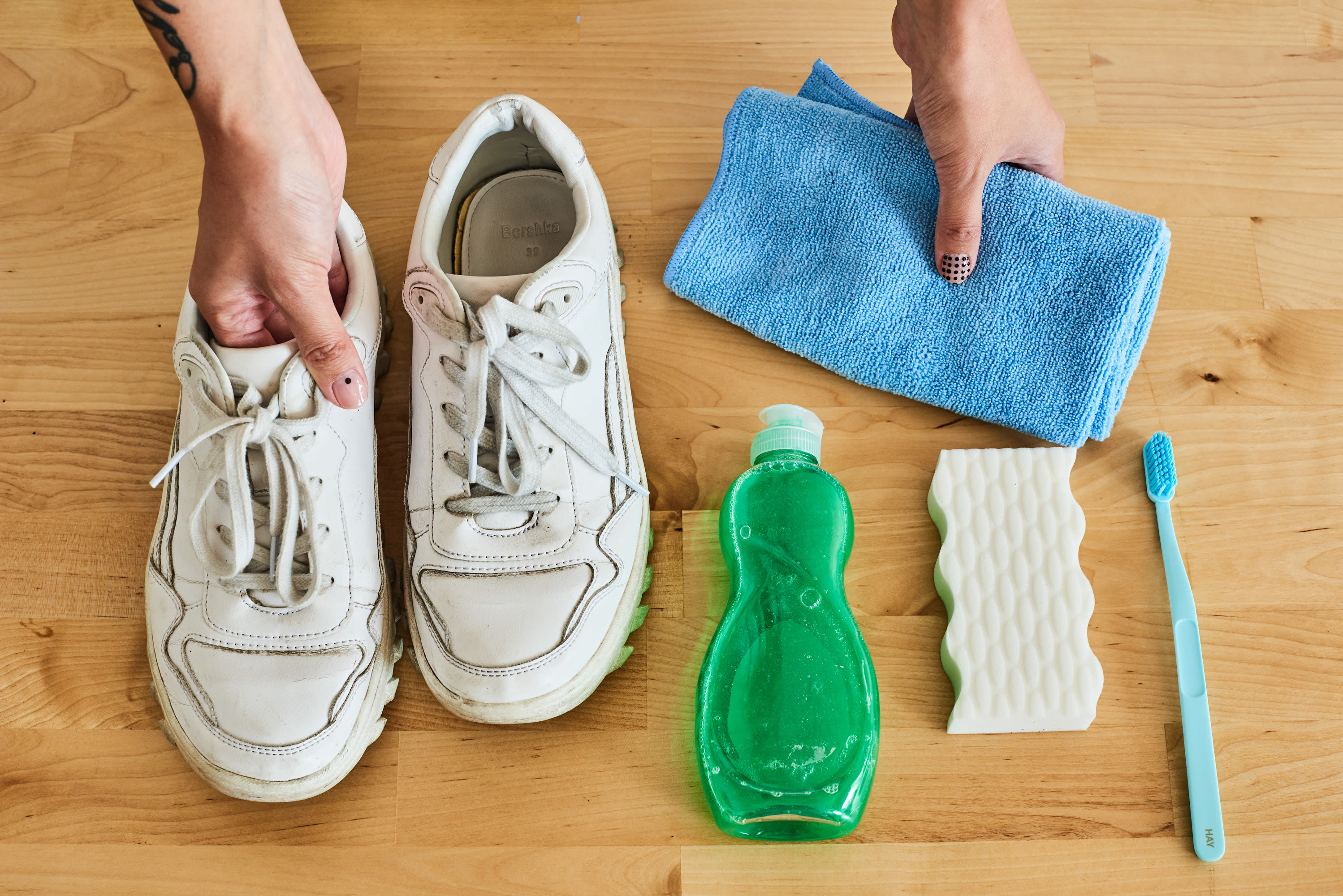
Credit: www.apartmenttherapy.com
Frequently Asked Questions
Is Hydrogen Peroxide Safe To Use On Shoes?
Hydrogen peroxide is safe for most shoes, especially rubber and plastic ones. It’s commonly used for disinfecting shoe bottoms.
How To Sanitize The Inside Of Shoes?
To sanitize the inside of shoes, use an antifungal spray or powder, then let them dry completely before wearing.
How To Get White Shoes White Again?
To get white shoes white again, mix hydrogen peroxide with baking soda to make a paste. Apply the paste to the shoes, scrub gently, and let them dry.
How To Get Rid Of Fungus Inside Shoes?
To get rid of fungus inside shoes, use an antifungal spray or powder to kill any lurking fungi. Make sure to allow the shoes to dry completely before wearing them again. It’s safe to use hydrogen peroxide on most rubber and plastic shoes, but be sure to check the manufacturer’s recommendations.
Avoid starting sentences with certain phrases and write in a clear, concise, and human-like manner.
Conclusion
To sum up, cleaning shoes with hydrogen peroxide can be safe for most rubber and plastic shoes. It’s an effective method for disinfecting and removing stains. Remember to test on a small area first and avoid using it on delicate materials.
Follow proper guidelines for best results.
